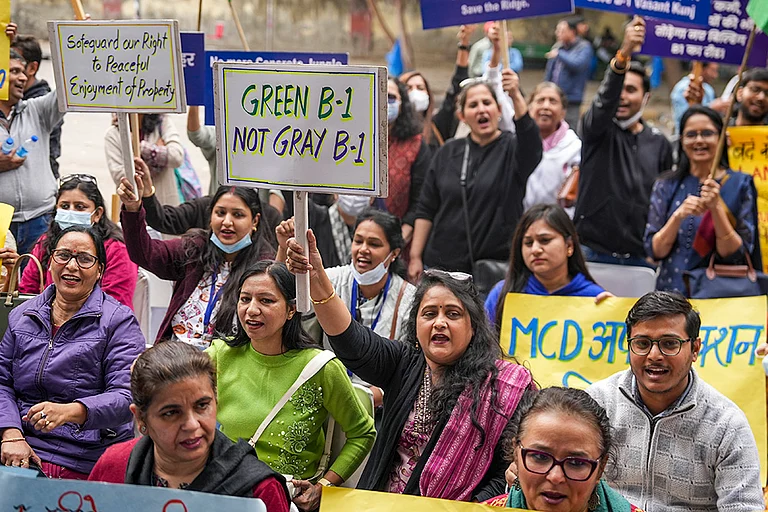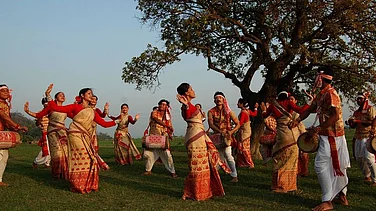Chaitra Navratri, also known as Vasant Navratri, falls in the Hindu lunar month of Chaitra, typically in March or April according to the Gregorian calendar. It commemorates the arrival of spring and the rejuvenation of life on earth. During this time, devotees invoke the blessings of Goddess Durga and her nine divine forms, known as Navadurga, to seek strength, wisdom, and prosperity.
In Hindu tradition, Chaitra Navratri is of the utmost significance as it represents the spirit of devotion, rebirth, and spiritual awakening. Devotees celebrate Goddess Durga and ask for her blessings for protection, peace, and prosperity through rituals including Ghatasthapana, puja, fasting, and Kanya Pujan. Navratri turns into a time of divine communion as devotees immerse themselves in the loving embrace of the Goddess, seeking comfort, strength, and contentment in her heavenly grace, as the aroma of incense fills the air and the sound of hymns echoes.
Spiritual Essence of Chaitra Navratri
Chaitra Navratri serves as a reminder of the eternal values that this auspicious occasion instills in our life. It's an opportunity to embrace the spiritual energy that surrounds and exists within us, to connect with our inner power, and to ask for blessings for courage and wisdom. We purify our thoughts and emotions by letting go of negativity and receiving positivity and abundance via the rituals of fasting, prayers, and devotional activities. We ask Goddess Durga for her blessings in order to overcome challenges, achieve inner peace, and live a life full of compassion, love, and righteousness.
Chaitra Navratri is a spiritual journey, a time to consider our deeds, ask for forgiveness, and celebrate life more than just a celebration.
A Look Into Everyday Customs
During Chaitra Navratri, worship is offered to the divine feminine in the form of nine goddesses, each of whom symbolizes a distinct facet of prosperity, power, or knowledge. Every goddess is worshiped and praised throughout these nine auspicious days, from the Durga Mata to the kind and nurturing Lakshmi Mata.
Day 1: Shailputri Puja
The goddess of power and purity, Shailputri Mata, is worshiped on the first day of Navratri. Early morning prayers, a cleansing bath, and offerings to the goddess are made by devotees. They ask for her blessings for prosperity and good health by chanting mantras, lighting incense, and presenting flowers.
Day 2: Brahmacharini Puja
On the second day, the gentle Brahmacharini Mata is worshiped. She symbolizes devotion, penance, and wisdom. Devotees observe a fast, consuming only fruits and milk. Some also perform rituals like lighting lamps and offering sacred water to the goddess.
Day 3 - Chandraghanta Puja
Chandraghanta Mata, renowned for her bravery and courage, is celebrated on the third day. Prayers are offered by devotees for safety and harmony. On this day, people fast and give milk, candies, and fruits to the goddess as a sign of their love.ering milk, sweets, and fruits to the goddess as a token of devotion.
Day 4: Kushmanda Puja
On the fourth day, people worship the universe's creator, Kushmanda Mata. Before the sun rises, devotees light earthen lamps, present incense and crimson flowers. In addition, they convey happiness and generosity by giving food and clothing to those in need.
Day 5 - Skandamata Puja
Skandamata Mata, Lord Kartikeya's mother, is worshiped on the fifth day. Offerings to the goddess include bananas, jaggery, and coconuts. Some recite tales of her bravery and love for her children, and others perform kirtans, or devotional songs.
Day 6 - Katyayani Puja
Katyayani Mata, the fierce warrior goddess, is worshiped on the sixth day. Devotees perform rituals with turmeric, sandalwood, and vermillion, symbolizing strength and protection. It's a day of fasting, prayers, and seeking blessings for courage.
Day 7 - Kalaratri Puja
On the seventh day, the fearsome yet compassionate Kalaratri Mata is revered. Devotees offer black sesame seeds, jaggery, and cloves to the goddess. They also light oil lamps and recite hymns, seeking her blessings for the removal of obstacles.
Day 8 - Mahagauri Puja
The eighth day is dedicated to worshiping Mahagauri Mata, a symbol of grace and purity. Offerings to the goddess include milk, sweets, and white flowers. Today is dedicated to cleansing the body and spirit via fasting and prayer.
Day 9 - Siddhidatri Puja
Navratri's ninth final day is devoted to Siddhidatri Mata, the goddess of blessings. Prayers are offered by devotees for success, wealth, and enlightenment. In appreciation of the goddess' grace, there will be feasts, music, and dancing on this wonderful festival day.
May this Chaitra Navratri bring us blessings, happiness, and wealth. May the divine mother give us her love and protection always, and may we walk through the path of righteousness with bravery and compassion.



























